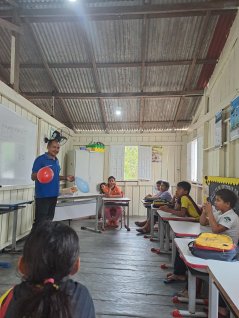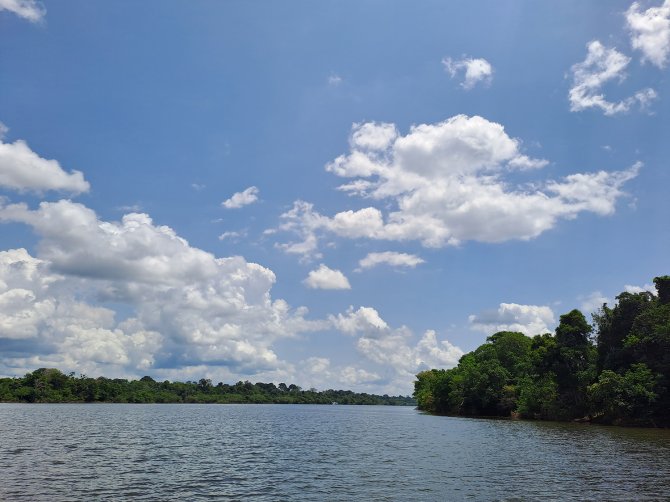Typically, Jordi Vilà and Martin Janssens are interested in fundamental research questions, such as: how clouds bringing rain to the Amazon forest depend on the forest itself? They rely on data from the 323-meter-tall Amazon Tall Tower Observatory. Realising that local communities were not informed about the tower's purpose, the team used engaging experiments, videos, and apps, to introduce science to the schools. Their goal is to inspire fellow scientists to consider how they can create awareness in local communities, connecting it to their fundamental research.
The idea emerged in collaboration with Cybelli Barbosa, a Brazilian environmental researcher at the National Institute for Amazonian Research. She is part of CloudRoots, a project in which an international team including Vilà and Janssens, studies the interaction between clouds and rainforests. This fundamental research requires many biological and weather measurements in the field, from the photosynthesis of individual leaves to turbulent cloudy plumes. Their work takes them to the Amazon Tall Tower Observatory (ATTO) in the heart of the pristine Brazilian rainforest.
Even the most remote Amazonian riverbanks around the tower are home to communities accessible only by long boat trips. While talking to Barbosa, the team learned that the communities were initially unaware of the research activities related to the tower. "They assumed it was for mining, a common illegal activity in the rainforest," says Jordi Vilà, chairholder at the Meteorology group. "We were shocked. It made us question how we can protect the rainforest through science if we overlook the people whose lives depend on it."
Support of colleagues

Following earlier initiatives by Barbosa, they discussed how they could contribute to the communities. Barbosa embodies an approach that goes beyond science. She regularly asked local schoolteachers if science could help them teach children the value of their fragile ecosystem. "The answer was overwhelmingly clear," says Vilà. "Both children and teachers want to learn more about their environment, with real biogeochemists, ecophysiologists, and meteorologists offering practical support and creating materials that empower local teachers. So this is what we did."
The team received a small amount offunding from NWO to develop educational materials for local schools. They enlisted WUR colleagues to help, who responded with overwhelminggoodwill and support. Kirsten de Beurs, chairholder in the Remote sensing group, designed an app for real-time weather and vegetation observations tailored to the Uatumã Reserve, where the schools are located. The Educational Media Team of WUR helped produce videos featuring scientists demonstrating simple physics experiments on air, its movement, weight, and cloud formation. All materials were made available on the CloudRoots website.
Drawing pollution
Last summer, the team delivered the materials to remote communities. They introduced the schoolchildren to the lessons. "We taught them and their teachers about the environment using simple experiments, videos, and games," says Martin Janssens, assistant professor in the Meteorology group. "But we may have learned even more from them. When we asked them to draw pollution or the ocean, they were unsure where to start. But when asked to draw a river, they produced stunning drawings, complete with piranhas, revealing their connection to their local and pristine environment."

In recent weeks, this approach took flight. "We brought together teachers from communities around the observatory tower, visited their schools, and let them take charge of the new teaching materials. Inspired by their experiences and the children's enthusiasm, we want to make a case for pausing to listen. Our ultimate goal would be to receive long-term funding to structurally support local scientists such as Cybelli in regularly visiting the school and updating and creating other lesson materials."






